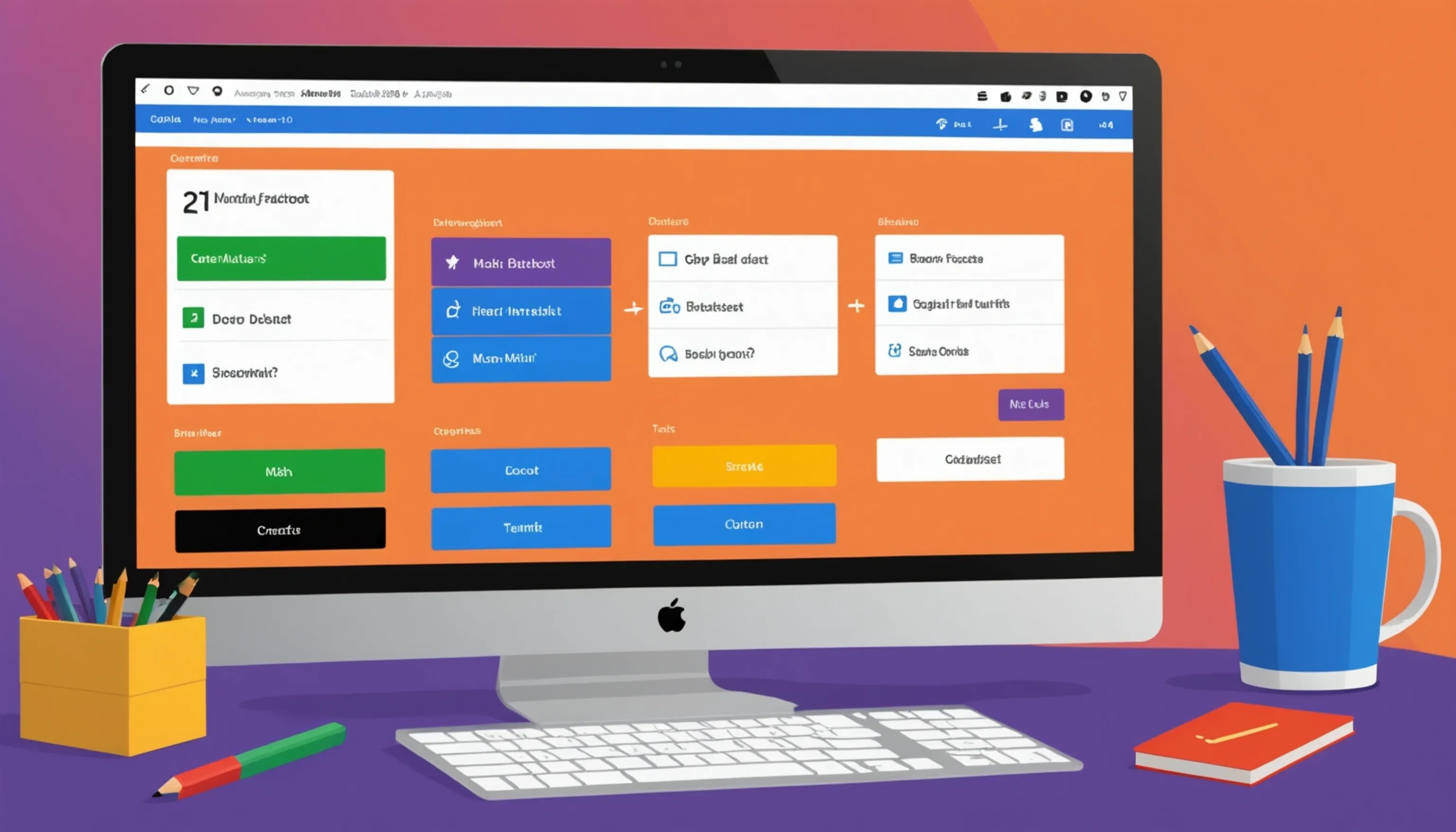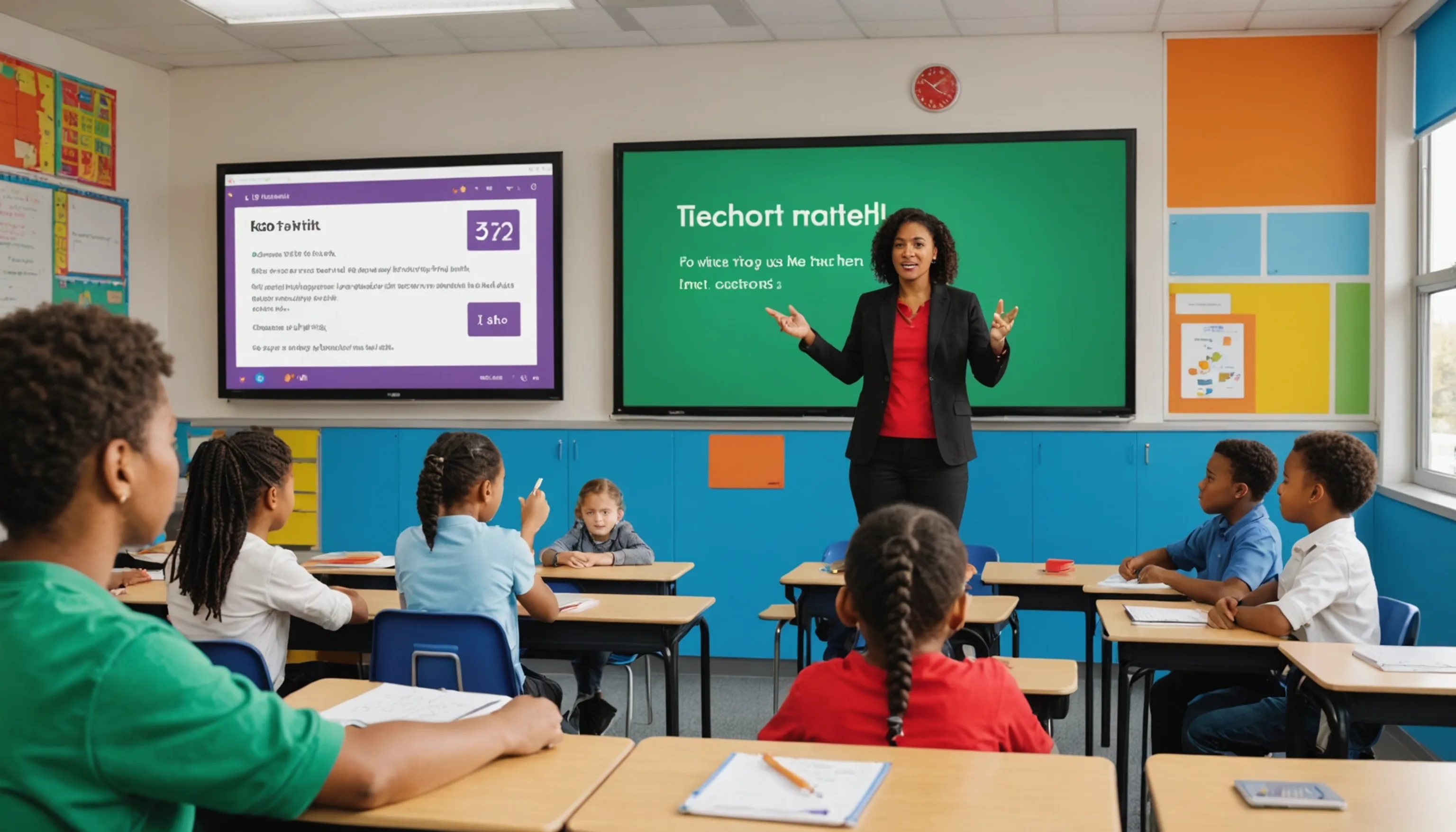Kahoot for Math Learning
 HvWHenry van Wagenberg
HvWHenry van Wagenberg
Using Kahoot for Math Learning
Using Kahoot for math learning can transform the way students engage with mathematical concepts. This interactive platform allows teachers to create fun and challenging quizzes that promote active participation. By incorporating Kahoot into lessons, students can compete in real-time, which fosters a sense of excitement and motivation.
Moreover, Kahoot's game-based learning approach helps to reinforce essential math skills, making complex topics more accessible. This method not only enhances understanding but also encourages collaboration among peers, as they can discuss and strategize together during the quizzes.
What is Kahoot?
Kahoot is an innovative learning platform that uses game-based learning to make education engaging and interactive. Founded in 2013, it allows users to create and participate in quizzes, discussions, and surveys, all designed to enhance the learning experience. The platform can be accessed on various devices, including smartphones, tablets, and computers, making it versatile for classroom and home use.
At its core, Kahoot transforms traditional learning methods into an exciting game format. Teachers or parents can create custom quizzes, known as kahoots, which can include multiple-choice questions, true/false statements, and even puzzles. Players join the game using a unique PIN, and they compete against each other in real-time, answering questions that appear on a shared screen.
The competitive aspect of Kahoot keeps students engaged and motivated, as they can see their scores and rankings instantly. This immediate feedback encourages a healthy competitive spirit and can lead to improved retention of knowledge. Additionally, Kahoot supports collaborative learning, as students often work together to discuss answers and strategies.
Overall, Kahoot is a versatile tool that caters to various learning styles and helps make subjects like math more enjoyable. Its interactive nature not only enhances student engagement but also allows educators to assess understanding and adapt their teaching methods accordingly.
Benefits of Kahoot in Math Education
The use of Kahoot in math education offers numerous benefits that enhance student learning and engagement. One of the primary advantages is its ability to make math concepts more accessible and enjoyable. By gamifying the learning process, Kahoot transforms traditional math exercises into interactive quizzes that capture students' attention.
Another significant benefit is the immediate feedback provided during quizzes. As students answer questions, they receive instant results, allowing them to understand their strengths and weaknesses in real-time. This immediate assessment helps to reinforce learning and identify areas that require further attention.
Kahoot also promotes a collaborative learning environment. Students can work in teams, discussing their thought processes and strategies, which fosters communication skills and deeper understanding of mathematical concepts. This teamwork aspect encourages peer-to-peer learning, where students can explain and clarify concepts to one another.
Additionally, Kahoot allows for differentiation in the classroom. Teachers can create quizzes tailored to different skill levels, ensuring that all students are appropriately challenged. This customization helps cater to diverse learning styles, making math education more inclusive.
Finally, the competitive nature of Kahoot encourages motivation and participation. Students are more likely to engage with math when they can compete with their peers, leading to increased enthusiasm and improved retention of mathematical skills. Overall, integrating Kahoot into math education can lead to a more dynamic and effective learning experience.

How to Create a Math Quiz on Kahoot
Creating a math quiz on Kahoot is straightforward and user-friendly. Start by signing up or logging into your Kahoot account. Click on the “Create” button to begin crafting your quiz. You can choose to make multiple-choice questions, true/false statements, or puzzle challenges. For each question, input the text, set the time limit, and specify the correct answer.
Don’t forget to add images or videos to enhance engagement! Once you’ve added all your questions, review your quiz and save it. Finally, share the game PIN with your students to get started!
Step-by-step guide to creating a quiz
Creating a quiz on Kahoot is an engaging way to assess students' understanding of math concepts. Here’s a step-by-step guide to help you get started.
- Sign Up or Log In: First, visit the Kahoot website and create an account if you don’t already have one. If you have an account, simply log in.
- Create a New Kahoot: Click the “Create” button on your dashboard to start a new quiz. You can choose from several formats, including quizzes, surveys, and discussions.
- Add Questions: Begin adding questions to your quiz. For each question, you can select various types such as multiple-choice, true/false, or puzzles. Enter the question text and possible answers. Be sure to highlight the correct answer.
- Set Time Limits: Choose how long students will have to answer each question. Time limits can vary depending on the complexity of the questions, so adjust accordingly.
- Enhance with Media: To make your quiz more engaging, consider adding images or videos relevant to the questions. This can help illustrate concepts and keep students interested.
- Review and Save: After entering all your questions, review your quiz for accuracy. Once satisfied, click “Save” to store your quiz.
- Launch Your Quiz: Share the game PIN with your students, and you’re ready to launch the quiz!
Following these steps will ensure you create an engaging and effective math quiz using Kahoot.
Tips for engaging math questions
When crafting math questions for Kahoot, it’s essential to make them engaging and effective for your students. Here are some tips to help you create captivating math questions that enhance learning:
- Use Real-World Scenarios: Incorporate real-life situations to make math relatable. For example, instead of simply asking for the solution to a problem, frame it around a shopping scenario where students must calculate discounts or total costs.
- Vary Question Formats: Mix up question types by including multiple-choice, true/false, and puzzles. This variety keeps students interested and challenges them to think critically in different ways.
- Incorporate Visuals: Adding images or diagrams can help students visualize complex concepts. For instance, use graphs for geometry questions or charts for statistics-related queries.
- Keep Questions Clear and Concise: Ensure that your questions are easy to understand. Avoid overly complicated language, and focus on clarity to prevent confusion.
- Challenge Students: While it’s important to keep questions accessible, don’t shy away from including challenging problems. This encourages students to stretch their understanding and fosters a growth mindset.
- Use Humor: Lighthearted questions can make learning fun. Incorporating a bit of humor or playful language can enhance engagement and make the quiz enjoyable.
By implementing these tips, you can create engaging and effective math questions that capture your students’ interest and support their learning.

How to Use Kahoot in the Classroom
Using Kahoot in the classroom is an effective way to engage students in their learning. Begin by creating a quiz relevant to your lesson, ensuring it aligns with learning objectives. Once prepared, project the quiz on a screen and share the game PIN with your students, who can join using their devices.
Encourage participation by highlighting the leaderboard and offering incentives for top performers. After the quiz, review the answers together to reinforce learning and address any misunderstandings. Kahoot not only makes learning interactive but also fosters a collaborative classroom environment.
Incorporating Kahoot into your lesson plans
Incorporating Kahoot into your lesson plans can significantly enhance student engagement and learning outcomes. Here are some effective strategies to seamlessly integrate this interactive platform into your curriculum:
- Align with Learning Objectives: Start by identifying the key learning objectives of your lesson. Create Kahoot quizzes that directly relate to these goals, ensuring that each question reinforces the material you’re teaching.
- Use as a Warm-Up Activity: Begin your class with a Kahoot quiz to activate prior knowledge and stimulate interest in the day's topic. This can help set the tone for the lesson and encourage participation right from the start.
- Review and Reinforce: After introducing new concepts, use Kahoot to review the material. This not only reinforces learning but also identifies areas where students may need additional support.
- Encourage Peer Collaboration: Arrange students in teams to answer Kahoot questions collaboratively. This promotes discussion and allows students to learn from each other, fostering a deeper understanding of the content.
- Assess Understanding: Utilize Kahoot as a formative assessment tool to gauge student comprehension. Analyze the results to identify trends and adjust your teaching strategies accordingly.
- Plan Follow-Up Activities: After a Kahoot session, engage students in discussions based on quiz results or assign related activities to further deepen their understanding.
By thoughtfully incorporating Kahoot into your lesson plans, you can create a more interactive and effective learning environment that resonates with students.
Engaging students with interactive quizzes
Engaging students with interactive quizzes is a powerful method to enhance learning and retention. Utilizing platforms like Kahoot allows educators to create quizzes that not only assess knowledge but also foster a fun and competitive atmosphere in the classroom.
To maximize engagement, consider the following strategies when designing your interactive quizzes:
- Diverse Question Types: Incorporate a variety of question types, such as multiple-choice, true/false, and puzzles. This keeps students on their toes and caters to different learning styles.
- Incorporate Multimedia: Use images, videos, or audio clips in your quizzes to make them more engaging. For example, a math quiz could include diagrams or real-world applications that spark interest.
- Set a Competitive Tone: Display a leaderboard during the quiz to create a sense of competition. Healthy competition can motivate students to perform their best and increase participation.
- Encourage Team Play: Organize students into teams to answer quiz questions collaboratively. This encourages discussion and teamwork, making the learning experience more interactive and enjoyable.
- Provide Immediate Feedback: One of the strengths of Kahoot is the instant feedback it offers. Use this feature to discuss correct and incorrect answers with the class, reinforcing learning in real-time.
By implementing these strategies, you can create engaging interactive quizzes that not only assess student understanding but also promote a lively and dynamic learning environment.
Evaluating student performance with Kahoot
Evaluating student performance with Kahoot is an effective way to assess understanding and track progress. After each quiz, teachers can access detailed reports that highlight individual and group performance. These reports show correct and incorrect answers, allowing educators to identify trends and areas where students struggle.
Additionally, the immediate feedback provided during the quiz encourages students to reflect on their answers. By analyzing this data, teachers can tailor their instruction to address gaps in knowledge and adapt future lessons, ensuring a more personalized learning experience for each student.
Tracking progress and understanding
Tracking progress and understanding through Kahoot is a vital component of effective teaching. This platform not only allows educators to create engaging quizzes but also provides valuable insights into student performance over time. By analyzing data from Kahoot quizzes, teachers can monitor individual and group progress, enabling them to make informed instructional decisions.
One of the key features of Kahoot is the ability to access detailed analytics after each quiz. Teachers can view statistics such as overall scores, question breakdowns, and the percentage of correct answers. This information helps identify which concepts students grasp well and which areas may require additional focus.
To effectively track progress, consider implementing the following strategies:
- Regular Quizzes: Schedule Kahoot quizzes periodically throughout the unit to assess ongoing understanding. This allows for timely interventions if students are struggling with specific topics.
- Set Goals: Encourage students to set personal goals based on their quiz results. This promotes ownership of their learning and motivates them to improve.
- Compare Performance: Use Kahoot to compare performance across different quizzes. Analyzing trends can reveal improvements or persistent challenges that need addressing.
- Provide Feedback: After quizzes, offer personalized feedback based on performance. Discuss areas of strength and suggest ways to improve on weaker topics.
By effectively tracking progress and understanding, teachers can create a more responsive and supportive learning environment that caters to the needs of each student.
Using feedback for improvement
Using feedback for improvement is a crucial aspect of the learning process, and Kahoot provides an excellent platform for facilitating this. After students complete a quiz, the immediate feedback they receive helps reinforce their understanding and highlights areas needing improvement. Educators can leverage this feedback to create a more effective learning experience.
To maximize the benefits of feedback from Kahoot, consider the following strategies:
- Review Results Together: After each quiz, take time to review the results as a class. Discuss the questions that were commonly missed and clarify any misconceptions. This collaborative review reinforces learning and encourages students to engage critically with the material.
- Personalize Feedback: Provide individual feedback based on quiz performance. Highlight specific areas where students excelled and offer tailored suggestions for improvement in topics where they struggled. This personalized approach fosters a growth mindset.
- Encourage Self-Reflection: Prompt students to reflect on their performance. Ask questions like, “What was challenging for you?” or “How can you improve next time?” This encourages ownership of their learning journey.
- Set Follow-Up Goals: Based on quiz results, help students set achievable goals for their next learning phase. This not only motivates them but also provides a clear path for improvement.
By effectively using feedback from Kahoot, educators can create a supportive environment that promotes continuous learning and improvement, ultimately leading to better student outcomes.
